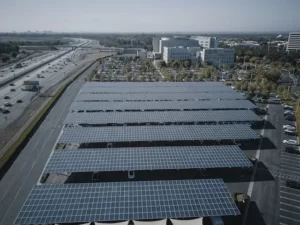In the realm of sustainable energy solutions, the landscape of solar and battery rebates, subsidies, and incentives for the year 2024 presents a complex yet promising terrain for energy consumers.
With a myriad of offerings tailored to different segments of society, the potential financial gains and environmental impact of embracing renewable energy sources are vast.
From overarching national schemes to localized initiatives, the interplay of support mechanisms underscores a shift towards eco-conscious practices.
As we navigate through this intricate web of incentives and benefits, the path towards a greener and more cost-effective future beckons, inviting stakeholders to explore the possibilities within this evolving ecosystem.
Key Takeaways
- National solar subsidies offer up to $2,600 off systems.
- Diverse state-specific EV rebates and incentives are available.
- Solar panel installations lead to significant energy bill savings.
- Trustworthy service with over 17,500 positive customer reviews.
National Solar Subsidies Overview
Nationally, solar subsidies represent a pivotal component of the renewable energy landscape, providing essential financial incentives to promote the adoption of solar power systems across various states in Australia.
Solar financing options have evolved to make solar installations more affordable, with rebates and incentives playing a significant role in driving industry trends. The availability of subsidies has spurred growth in the solar sector, encouraging both residential and commercial customers to invest in solar energy.
These incentives have led to an increase in solar panel installations, contributing to the overall shift towards renewable energy sources. Understanding the impact of solar subsidies on industry trends is crucial for stakeholders looking to navigate the evolving solar financing landscape.
Feed-in Tariffs and STCs Guide
The prevalence of solar subsidies has not only facilitated the widespread adoption of solar power systems but has also brought to light the importance of understanding the intricacies of feed-in tariffs and Small-scale Technology Certificates (STCs) in maximizing the benefits of solar energy investments.
To grasp these concepts effectively, consider the following:
- Maximizing Solar Savings: Exploring optimal strategies to leverage feed-in tariffs and STCs for increased financial gains.
- Understanding Energy Exports: Delving into the nuances of exporting surplus energy back to the grid and the associated benefits.
- Monitoring STC Market Trends: Staying informed about STC values and fluctuations to make informed decisions regarding solar investments.
Tailored Solar Rebates for All
How can tailored solar rebates contribute to increasing accessibility and affordability for all consumers interested in solar energy investments?
Customized savings plans play a crucial role in making solar energy more attainable for a broader demographic. By offering targeted renewable solutions that cater to specific needs and financial capabilities, more individuals and businesses can benefit from solar incentives.
These tailored rebates not only incentivize the adoption of solar technology but also help in reducing the overall cost burden associated with transitioning to renewable energy sources. Through personalized approaches, such as discounted installation programs or flexible payment options, tailored solar rebates can empower a wider range of consumers to embrace sustainable energy solutions and contribute to a greener future.
Residential Solar Battery Incentives
Tailored solar rebates have shown significant success in enhancing accessibility and affordability for consumers, paving the way for a closer examination of the impact and effectiveness of residential solar battery incentives.
Residential solar battery incentives offer a range of benefits for homeowners, including:
- Battery storage benefits: Residential solar batteries provide backup power during outages, increase energy independence, and can store excess energy for nighttime use.
- Financial savings opportunities: By storing excess solar energy, homeowners can reduce reliance on the grid during peak times, leading to lower electricity bills.
- Environmental impact: Utilizing solar batteries helps reduce carbon emissions and contributes to a more sustainable energy future.
State Varied EV Rebates
Examining the diverse landscape of state-specific rebates for electric vehicles reveals a nuanced array of financial incentives tailored to encourage adoption and reduce carbon emissions. EV rebate comparison across states showcases varying levels of government incentives. Queensland leads with rebates of up to $6,000, followed by South Australia offering $3,000.
Additionally, some states provide free registration, stamp duty exemptions, and grants for EV charger installations. This Government incentives analysis highlights the increasing support for electric vehicles nationwide, with each state strategically implementing measures to accelerate the transition to cleaner transportation options.
Understanding the differences in these rebates can aid consumers in making informed decisions regarding EV purchases and contribute to the overall reduction of greenhouse gas emissions.
Household Solar Energy Benefits
The focus on household solar energy benefits unveils a compelling array of advantages for Australian residents seeking to harness renewable power sources and reduce their carbon footprint.
Key Benefits:
- Cost Savings: By harvesting solar energy, households can significantly reduce electricity bills over time, leading to substantial long-term savings.
- Environmental Impact: Solar panel installations not only lower household emissions but also contribute to reducing overall carbon footprints, aiding in the fight against climate change.
- Energy Independence: Generating electricity from solar panels allows households to become more self-sufficient and less reliant on traditional grid power, providing stability and security amidst energy fluctuations.
These benefits underscore the value of investing in household solar energy systems for both economic and environmental reasons.
Trusted Solar Installers Network
Within the realm of solar energy solutions, establishing trust and reliability with a network of reputable solar installers is paramount for ensuring successful and efficient installations. Installer accreditation standards play a crucial role in ensuring the quality of workmanship and adherence to industry best practices.
By partnering with installers who meet or exceed accreditation standards, consumers can have confidence in the expertise and professionalism of the installation team. Additionally, conducting customer satisfaction surveys post-installation can provide valuable insights into the overall experience and help identify areas for improvement.
This data-driven approach not only fosters accountability but also contributes to continuous improvement within the network of trusted solar installers.
Transparent Customer Reviews
Incorporating transparent customer reviews into decision-making processes can provide valuable insights into the quality and reliability of solar installers and their services. Customer satisfaction plays a crucial role in assessing the performance of solar companies against industry standards.
Here are three key points to consider:
- Reliability: Evaluating customer reviews can help identify how reliable a solar installer is in delivering services and meeting expectations.
- Quality Assurance: Transparent feedback from customers allows potential clients to gauge the quality of workmanship and components used by the installer.
- Service Excellence: Reviews often highlight the level of customer service provided, indicating the overall experience customers have had with the installer.
State-Specific Incentive Breakdown
Evaluating the diverse range of state-specific incentives available across Australia provides valuable insights into the varying support mechanisms for renewable energy adoption in different regions. Regional rebate differences are evident, with each state offering unique incentives to promote solar and EV adoption.
Queensland stands out with EV rebates of up to $6,000 and $4,000 battery rebates, while New South Wales provides free 3kW systems for low-income households and $3,000 EV rebates. In the ACT, zero-interest loans for energy-efficient upgrades and full stamp duty exemption for EV purchases are available.
Victoria offers up to $1,400 solar panel rebates and interest-free solar battery loans. South Australia supports small-scale solar energy systems with $3,000 EV subsidies. Western Australia provides $3,500 EV rebates and solar incentives for any system size, and the Northern Territory offers significant discounts on solar systems and grants for battery schemes.
State-specific solar schemes play a crucial role in driving renewable energy adoption across Australia.
Frequently Asked Questions
How Do Solar and Battery Rebates, Subsidies, and Incentives Contribute to Australia’s Overall Renewable Energy Goals?
Renewable energy adoption is pivotal for Australia’s sustainability goals. Solar and battery incentives bolster this shift, enhancing energy affordability. These schemes motivate consumers to embrace clean energy solutions, reducing reliance on traditional power sources and advancing environmental conservation efforts.
Are There Any Upcoming Changes or Updates Expected in the Solar and Battery Incentive Programs for 2024?
Expected changes and program updates in solar and battery incentives for 2024 may include revised subsidy structures, enhanced eligibility criteria, and expanded offerings to align with evolving energy goals. Policy implications may focus on increasing accessibility and sustainability.
How Do Solar and Battery Incentives Impact the Overall Cost-Effectiveness of Transitioning to Renewable Energy in Households and Businesses?
Transitioning to renewable energy in households and businesses through solar and battery incentives can significantly enhance cost-effectiveness. Reduced electricity bills, lower emissions, and potential long-term savings showcase the positive environmental impact of embracing these technologies, fostering sustainability and financial benefits.
What Role Do Government Policies and Regulations Play in Shaping the Availability and Accessibility of Solar and Battery Incentives Across Different States?
Government regulations and policies significantly influence the availability and accessibility of solar and battery incentives across states. State differences create challenges in uniformity, impacting the adoption of renewable energy. Policy variations dictate the effectiveness of incentives.
How Do Solar and Battery Incentives Align With Australia’s Broader Energy Transition Strategies and Initiatives Towards a Sustainable Future?
In aligning with Australia’s broader energy transition goals, solar and battery incentives play a pivotal role in promoting sustainability. By encouraging renewable energy adoption, these incentives contribute to reducing carbon footprints and fostering a more environmentally conscious future.
Conclusion
In conclusion, the landscape of solar and battery rebates, subsidies, and incentives in 2024 offers a wealth of opportunities for both residential and commercial energy consumers in Australia. By taking advantage of national and state-specific initiatives, individuals and businesses can significantly reduce energy costs, lower their carbon footprint, and contribute to a more sustainable future.
Embracing renewable energy solutions and leveraging available incentives is key to driving the transition towards a greener and more energy-efficient society.



